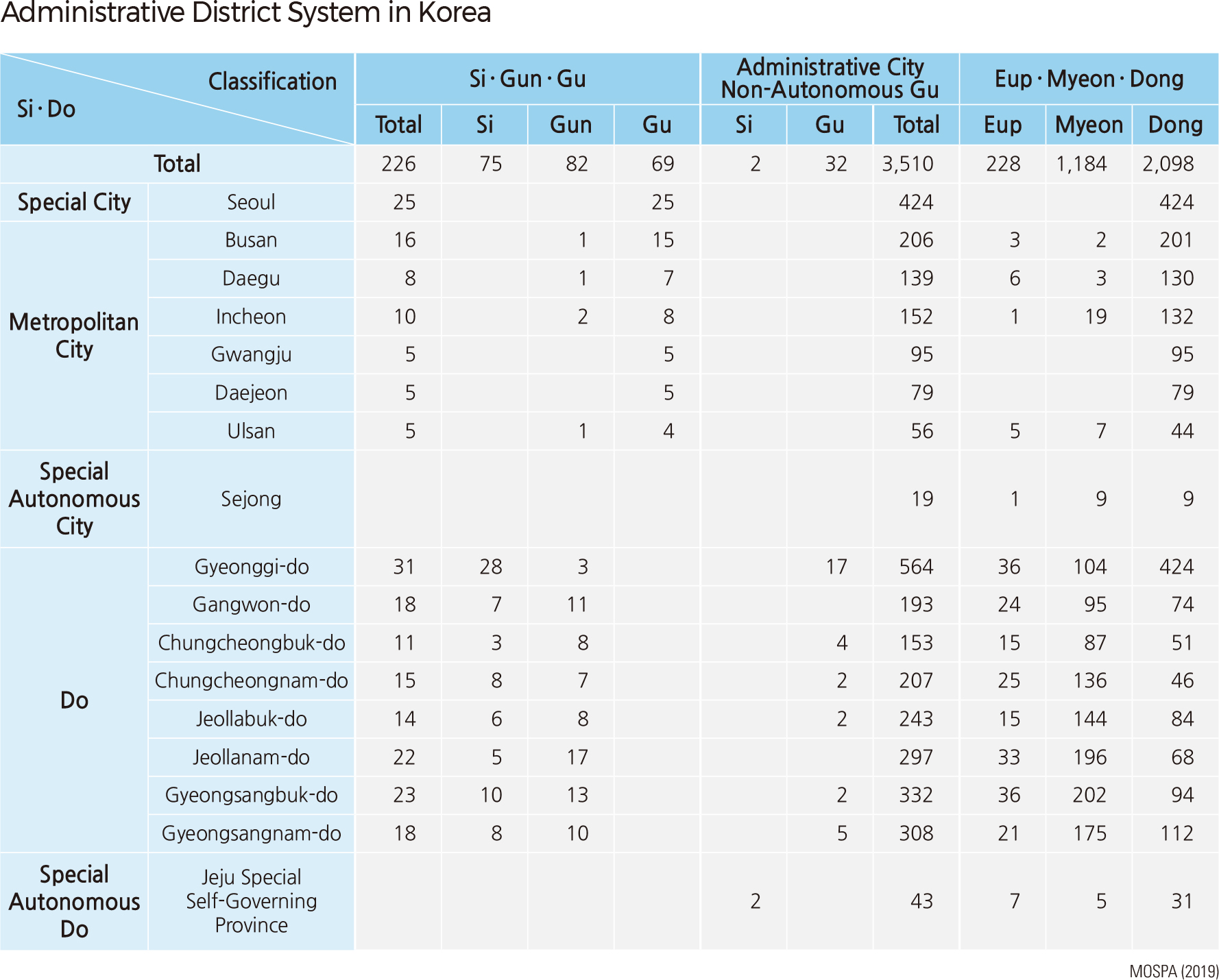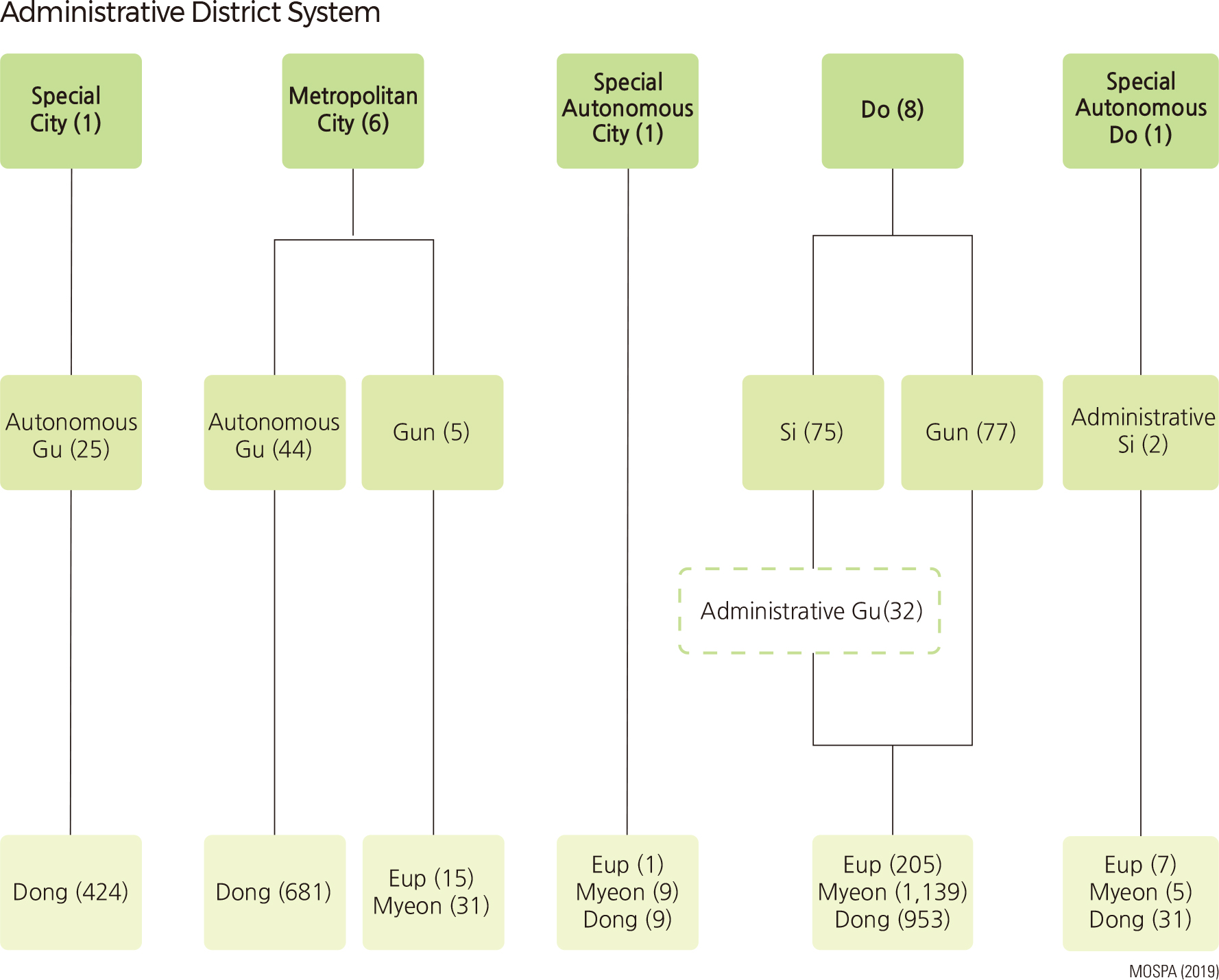English I 2019
Local autonomy refers to various activities through which an autonomous body representing the residents within a certain regional boundary carries out its political and administrative decision making while maintaining relative independence from the central government. Significant local autonomy includes jurisdiction; organization and administrative management of local government; the promotion of residents’ welfare; the promotion of industries including agriculture, forestry, trade, factories; local development and the establishment and management of public and private facilities for residents; and the promotion of education, athletics, culture, art, public safety, and firefighting. Local autonomy mainly consists of autonomous power over local affairs and an independent budgetary capacity in a geographical region with an explicit boundary where residents and an autonomous body are located. Local governmental autonomy has been a recent global trend.
Administrative organizations play a key role in local autonomy in Korea by maintaining close relations with their residents. The local autonomous body is constituted of local residents, and it forms a legal entity. There are two types of autonomous bodies in Korea: macro-level bodies such as the Special City, Metropolitan City, Special Autonomous City, do or Special Self-Governing Province, and primary level bodies such as si, gun or gu. In 2018, the macro-level local autonomous bodies in Korea were the Seoul Special City; six metropolitan cities including Busan, Daegu, Incheon, Gwangju, Daejeon, and Ulsan; the Sejong Special Autonomous City; eight dos including Gyeonggi-do, Gangwon-do, Chungcheongbuk-do, Chungcheongnam-do, Jeollabuk-do, Jeollanam-do, Gyeongsangbuk-do, and Gyeongsangnam-do; and the Jeju Special Self-Governing Province. In addition, there are 260 primary-level local autonomous bodies, including 77 sis (including 2 non-autonomous sis), 82 guns, and 101 gus (including 32 non-autonomous gus). There are also 228 eups, 1,184 myeons, and 2,098 dongs at the lower level. All the autonomous bodies mentioned above constitute the localized administrative system in Korea.
Local residents may participate in local autonomy mainly through elections. The local residents elect both the members of local councils and the heads of local governments. Both macro-level and primary level local councils are accordingly constituted. The heads of local governments include the mayor of the Seoul Special City, the mayor of the Metropolitan City, the governors of dos, and heads of guns and autonomous gus. The heads of local governments may request that residents vote on important matters that impose an excessive burden to the government or have a significant effect on the residents. The residents also have the right to recall the head of the local government or local council members.
Local finance must be supported for local autonomy to work efficiently. However, the financial independence ratio of local autonomous bodies in Korea is decreasing gradually as the budget required increases despite the increase in the revenue of local autonomous bodies. In response, the central government has increased the proportion of local taxes collected as part of taxes generally, increasing the revenue of local autonomous bodies. In addition, since local autonomy began in 1991 with the formation of local councils, the tasks and authority of local autonomous bodies have continued to expand as the central government has gradually transferred its administrative tasks and authorities to local autonomous bodies. |

